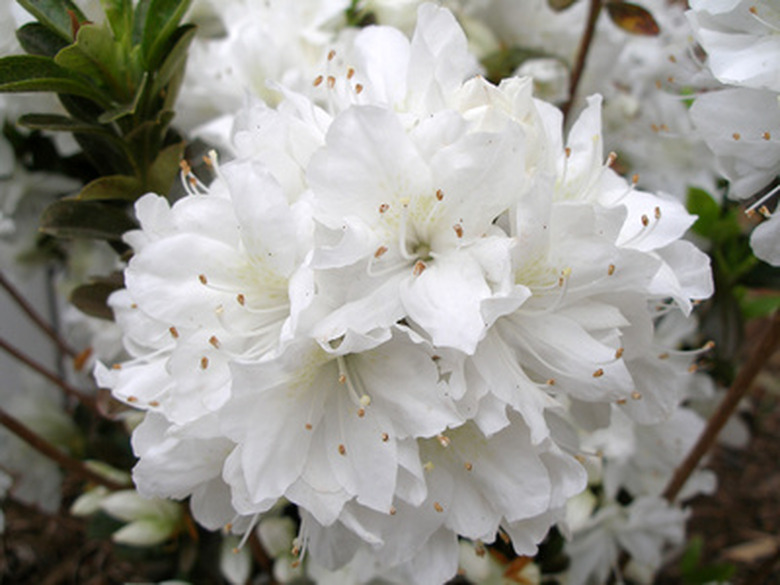How To Winterize Azaleas
Things Needed
- Pine bark
- Composted hardwood chips
- Shovel
- Leaves
- Netting
Members of the rhododendron family, azaleas bloom with smaller flowers than rhododendrons. While azaleas do not continue to bloom in the winter, or even have leaves that can survive the winter as do rhododendrons, if properly winterized, azaleas can simply become dormant during the cold winter months and bloom back to life in spring.
Step 1
Continue to water azaleas into the late fall, even after the plants have stopped blooming for the season. If rain remains steady throughout the fall months and keeps the soil around the azaleas moist, don't add any additional water. The New York Chapter of the American Rhododendron Society recommends watering azaleas up until Thanksgiving.
Step 2
Create mulch for the azalea. Break up pine bark, composted hardwood chips and oak leaves to create azalea mulch.
- Members of the rhododendron family, azaleas bloom with smaller flowers than rhododendrons.
- Continue to water azaleas into the late fall, even after the plants have stopped blooming for the season.
Step 3
Spread the mulch to cover the ground around the base of the azalea. Use enough mulch to cover to a depth of 2 to 3 inches around the plant base; ensure that the entire root ball of the plant is covered by the mulch. Do not let the mulch lie directly against the azalea plant stem.
Step 4
Plant any potted azaleas into the ground for the winter months early in the fall. To plant potted azaleas, you can either transplant them from the pot into the ground or place the entire pot into the ground. Try to plant the azaleas in a place that gets little wind and only indirect sunlight and that doesn't collect standing water.
Step 5
Pile leaves and mulch around a potted azalea if you do not get the azalea planted into the ground in time. Use netting around the base of the plant to hold the leaves and mulch in place and protect the root ball during the winter months.
- Spread the mulch to cover the ground around the base of the azalea.
- Pile leaves and mulch around a potted azalea if you do not get the azalea planted into the ground in time.
Tip
The American Rhododendron Society advises against using hardwood chips directly out of a wood chipper. Fresh chips rob the nitrogen from the soil as they decompose.
